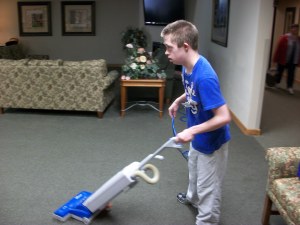Blog #129~ Communication Strategies and Autism
Last week I attended a presentation given by Brian R. King (www.brianraymondking.com). This was part of the Autism Expert Series at The College of DuPage. The topic was “Speaking of Autism: Communication Strategies for Connection and Collaboration with Those on the Autism Spectrum”. Brian has firsthand experience in this area. He is a best selling author, speaker, trainer and life coach. As a cancer survivor, adult with A.D.D., the father of three sons on the autism spectrum as well as someone who lives on the autism spectrum himself, he has learned something very critical: “That success in life has nothing to do with circumstances, but everything to do with strategies”. ~Brian R. King

In his presentation, Brian covered 6 main areas of needs and provided strategies specific to those on the autism spectrum:
- Certainty: What things can be put in place that that are predictable and consistent? Meltdowns can happen when a need for certainty is not met. So it is important to put a loop hole in daily plans. Make sure you have “Plan A” and “Plan B” in place and explain both beforehand. Plan A is golfing, but if it rains then go to Plan B a pre-set indoor activity. If they can trust that there is a Plan B, there will be less anxiety and a willingness to be flexible.
- Variety: As important as certainty is, there is a need to keep variety in the mix. Life can’t always be about going to McDonalds for lunch. You’ve got to step off the curb. Look up other restaurants on the web that have similar menu items with your child. Together, come up with a plan to try a new spot. Be prepared to have an escape plan, if the trip doesn’t go as planned so the child can decompress.
- Significance: People on the autism spectrum need to know they matter. What might appear to be attention seeking behavior (talking out of turn, not raising their hand to answer a question) may be an attempt to be noticed, validated and to be a part of the group. Another example is this; a child may not process the question as quickly as their peers. They might just make up an answer or a lie when put on the spot. One teacher tip would be to ask the question and say, “Johnny I’m going to come back to you in a couple of minutes”. This allows the child to process the question and not just blurt out any answer. Visuals can also help to process information. Provide a tool to write down the assignment.

- Love and Connection: Working with those on the autism spectrum requires patience and letting the child know that you hear them, understand them and have their back. It is essential to pause, and avoid lecture or shame. But rather teach that you want them learn from mistakes. Be their cushion of safety so they feel cared for and loved.

- Growth: We all have a desire to make progress and see results of improvement. What need is the child going toward? Often there is a tendency to gravitate to certainty. Look for ways to have the child excel in those places of certainty. In contrast, keep in mind the child will tend to avoid areas where there are too many opportunities to fail. These are the places that will require more support.
- Contribution: When you have something of value to give, you feel more significant. Look for those strengths and allow the child on the autism spectrum to shine.
My son Nick working the vacuum at a community job……

Assessing these 6 areas of needs and putting strategies in place will set your child up for success. It will also help those on the autism spectrum feel secure, valued, and connected and a part of the group/community. I am always looking for ways to help my son. Nick is 21 years old and has Down syndrome and autism. After attending this presentation I’ve identified some areas I need strengthen within these strategies. This includes getting a “Plan B” more consistently, continue to stretch his boundaries, listen to him when he tries to get attention inappropriately, and allow him to shine in what he does the best.
Thank you Brian R. King, for shining a light on how to better communicate with those on the autism spectrum and provide strategies to support them. That’s what is in my noggin this week.
~Teresa